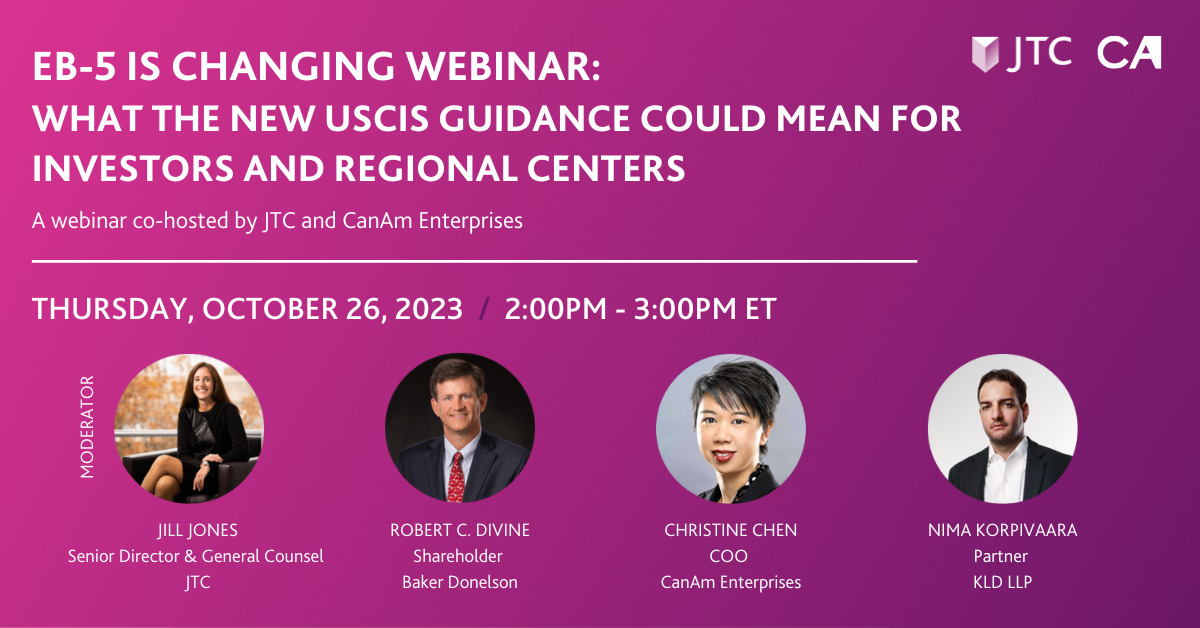As the immigration landscape in the U.S. grows increasingly complex, international students on F-1 visas are finding themselves facing uncertainty. From unexplained visa revocations to SEVIS record terminations, the security once associated with an F-1 status is no longer guaranteed. In a recent conversation between CanAm Enterprises COO Christine Chen and leading EB-5 immigration attorney Carolyn Lee, the two explored the current threats facing international students—and why the EB-5 visa, particularly through concurrent adjustment of status, offers a significantly more secure alternative.
The Unsettling Climate for F-1 Students
Carolyn Lee, one of the most respected voices in the EB-5 legal space, did not mince words about the challenges facing students on F-1 visas. “These are unexpected developments, and they’ve caused a tremendous amount of concern internationally within our F-1 student population and their families abroad,” Lee noted. She traced much of the recent turbulence to executive orders dating back to the first Trump administration, many of which continue to impact students today.
What’s alarming is the broad discretion granted to the U.S. Department of State and Immigration and Customs Enforcement (ICE). “F-1 visas are being revoked under umbrellas like anti-Semitic student activity or interests adverse to U.S. foreign policy,” she explained. Importantly, Lee added, “The State Department has plenary authority to revoke visas”—a reminder that even students who are fully compliant with all regulations can suddenly find themselves at risk.
And the revocations don’t stop with travel documents. “What we’re seeing is one or the other—or both: the F-1 visa revocations from State and F-1 status terminations on the SEVIS side by ICE,” Lee said. This dual vulnerability places students in a precarious position: they may be in status one day and completely out of it the next, often without knowing the reason why.
A Protection That F-1 Doesn’t Provide
One of the most important takeaways from the webinar was this: EB-5, particularly through concurrent adjustment of status (AOS), offers protections that the F-1 visa simply cannot match.
“The luckiest of the batch are students who have filed a concurrent adjustment of status application,” Lee explained. These students, often former F-1s who’ve begun the EB-5 process, are no longer solely reliant on their student status for lawful presence in the U.S. Once they receive their Employment Authorization Document (EAD) and Advance Parole travel document through AOS, they can live, work, and travel in the U.S. independently of their previous visa.
“Once that advance parole issues, the student can use that to leave the U.S. and return,” Lee said. “They’re not returning as F-1s using that visa that could be later revoked and trigger removal…they’re not in that sphere.” This distinction is critical. EB-5 investors traveling on advance parole are no longer at the mercy of SEVIS record updates or sudden policy shifts.
Christine Chen emphasized just how meaningful this transformation is: “EB-5 has really afforded them a lot more protection than others have,” she said. “It’s not a simplification of their status—it’s a strengthening.”
Why EB-5 Is Increasingly Attractive to International Students
The passage of the EB-5 Reform and Integrity Act (RIA) in 2022 added even more appeal for international students looking to remain in the U.S. post-graduation. Thanks to provisions allowing concurrent filing of I-526E and I-485 (adjustment of status) applications, students no longer have to wait for their EB-5 petition to be approved before transitioning out of the F-1 category.
Lee called this change “a gift that just keeps on giving.” For students who didn’t make the H-1B lottery cut or are running out of Optional Practical Training (OPT) time, EB-5 provides not only a path to a green card but also the freedom to continue working and living in the U.S. without interruption. “Now they have adjustment of status EADs, and they can keep working,” she said. “It’s just been phenomenal.”
The flexibility extends to spouses as well. “Their spouses can get an EAD and adjustment of status application,” Lee noted, highlighting the holistic benefits EB-5 offers to entire families.
Real-World Peace of Mind
Lee’s firsthand experience dealing with students who’ve had F-1 complications brings a grounded urgency to her advocacy for EB-5. “We’ve had clients who didn’t even know their SEVIS record was terminated,” she said. In some cases, students had prior minor legal incidents—often expunged or never resulting in charges—and years later, those issues resurfaced as grounds for revocation.
Even worse, the revocation or termination might not come with an explanation. “Sometimes the students don’t know why,” Lee said. “The reason provided in the SEVIS database is just ‘failure to maintain status.’” With EB-5 and adjustment of status, students don’t face the same vulnerability to bureaucratic ambiguity.
Importantly, even students who haven’t yet adjusted their status but are in the process of doing so—such as those who have filed or are preparing to file a concurrent adjustment of status application—may still have a viable remedy to a revocation. “The adjustment process itself can offer a protective pathway,” Lee emphasized. As long as there is visa availability, this transition from F-1 to EB-5, even in progress, can serve as a strong legal basis for restoring or maintaining lawful presence.
Chen summarized the issue well: “Even if you think you’re totally compliant, it’s easy to feel vulnerable when the rules seem to change, or the enforcement suddenly ramps up.”
Preparation Is Still Key
While EB-5 does offer a more secure foundation, Lee stressed the importance of preparation and consultation. “We’re not giving legal advice here, folks,” she said. “But we are sharing experiences that should be food for thought.”
She encouraged students to keep digital copies of their immigration documents, maintain regular contact with their Designated School Official (DSO), and be proactive in monitoring school communications. “Have somebody who knows your schedule,” she advised. “If you’re not in class or at a club activity, someone should notice.”
Even for those who haven’t begun the EB-5 process, remedies do exist. Some students have successfully sued for reinstatement through Temporary Restraining Orders (TROs), while others may still be eligible to adjust status despite being technically out of status—thanks to carveouts under the RIA. But time is of the essence.
“For anyone who is thinking about EB-5, don’t wait,” Chen urged. “Take action on your visa as soon as possible to make that your effective status in the United States.”
Read More: EB-5 Student Investor ALERT: Important Updates on F-1 Visa Revocations and SEVIS Terminations by Carolyn Lee
A Final Word
Both Chen and Lee left viewers with a sense of cautious optimism. “In times of uncertainty, act wisely,” Lee advised. That means being informed, being proactive, and—if your long-term future is in the U.S.—considering EB-5 as a more secure pathway.
Chen closed the discussion with a sentiment that resonated deeply: “Being informed and educated is the best way to create a sense of calm and predictability when there isn’t any to be had.”
In today’s unpredictable immigration environment, F-1 may no longer offer the confidence it once did. EB-5, with its broader protections and direct path to permanent residency, is emerging as a beacon of stability—and for many international students, a much-needed sense of control over their future.
Dive Deeper Into EB-5:




